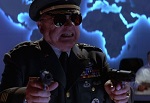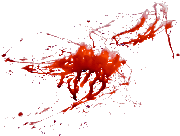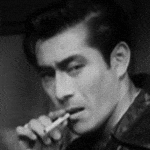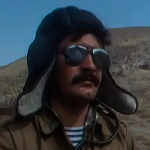HEY GAL posted:one of my favorite things is to find a guy in a muster roll who's listed as having walked off and then see him a year or so later in the same company again "Hey Fritz, that our bottle of wine? It is now, pig dog!"
|
|
|
|
|

|
| # ? May 18, 2024 12:24 |
|
you know how electron maps don't depict the actual location of electrons, which we can't really determine, but the "cloud" of area that an electron might be in, probably? that's what a 17th century company is like
|
|
|
|
HEY GAL posted:you know how electron maps don't depict the actual location of electrons, which we can't really determine, but the "cloud" of area that an electron might be in, probably? that's what a 17th century company is like My god, and then you can model combat as destructive interference between two electron waves! If only Newton had been a mercenary, we'd have had quantum physics 300 years early.
|
|
|
|
Crazycryodude posted:My god, and then you can model combat as destructive interference between two electron waves! If only Newton had been a mercenary, we'd have had quantum physics 300 years early.
|
|
|
|
Wele goelcerth wen yn fflamio A thafodau t�n yn bloeddio Ar i'r dewrion ddod i daro, Unwaith eto'n un: Gan fanllefau'r tywysogion, Llais gelynion, trwst arfogion, A charlamiad y marchogion, Craig ar graig a gryn Arfon byth ni orfydd, Cenir yn dragywydd; Cymru fydd fel Cymru fu, Yn glodfawr ymysg gwledydd; 'Ngwyn oleuni'r goelcerth acw, Tros wefusau Cymro'n marw, Annibyniaeth sydd yn galw, Am ei dewraf ddyn. https://youtu.be/XSEU5zHgcTc Men of Harlech, march to glory, Victory is hov'ring o'er ye, Bright-eyed freedom stands before ye, Hear ye not her call? At your sloth she seems to wonder; Rend the sluggish bonds asunder, Let the war-cry's deaf'ning thunder Every foe appall. Echoes loudly waking, Hill and valley shaking; 'Till the sound spreads wide around, The Saxon's courage breaking; Your foes on every side assailing, Forward press with heart unfailing, 'Till invaders learn with quailing, Cambria ne'er can yield! Edit: reminds me to do more castle posts!
|
|
|
|
What were the methods and weapons that planes used to attack ships during the interwar and WW2 years? I'm aware of the usual dive bombing, skip bombing, and torpedo runs but apparently rockets (and in the case of a B-25 variant, a 75mm cannon) were also used.
|
|
|
|
Going to be a big ruiner butt and add that only a handful of dudes in Zulu were Welsh, their regiment sort of stationed themselves in Wales after that conflict. Good song though!
|
|
|
|
|
Danann posted:What were the methods and weapons that planes used to attack ships during the interwar and WW2 years? I'm aware of the usual dive bombing, skip bombing, and torpedo runs but apparently rockets (and in the case of a B-25 variant, a 75mm cannon) were also used. Iirc a lot of the draw of the 75mm and later the rockets was to provide suppression against the AA. Same for the absolute walls of smaller guns those things could carry.
|
|
|
|
xthetenth posted:Iirc a lot of the draw of the 75mm and later the rockets was to provide suppression against the AA. Same for the absolute walls of smaller guns those things could carry. As I know from War Thunder, the wall of guns a B-25 could carry is most useful for shooting down fighters.
|
|
|
|
Danann posted:What were the methods and weapons that planes used to attack ships during the interwar and WW2 years? I'm aware of the usual dive bombing, skip bombing, and torpedo runs but apparently rockets (and in the case of a B-25 variant, a 75mm cannon) were also used. Anything a plane carried was used against ships, but how effective they were depended on the ship. MGs and small-calibre cannons were best against AA or soft targets but require an enormous amount of ammo if you tried to sink a ship with only those. Several different planes had large-calibre guns, like the B-25 variant which was used against Japanese ships. There were also experimental aircraft that tried to do the same, namely a Ju-88 version if I recall off the top of my head. Rockets were also used, but suffered from the lack of accuracy that was common at the time. Other weapons include such gems as the Fritz guided bomb and other similar explosives, but their accuracy and success depended on a lot of factors (weather, flak, air superiority/surprise, technical issues, etc). Indirectly, some bombers carried mines which would present another hazard to ships. As for methods, you've pretty much named them all unless you want to count high-angle bombing as something different from dive bombing.
|
|
|
|
Jobbo_Fett posted:As for methods, you've pretty much named them all unless you want to count high-angle bombing as something different from dive bombing. Forgot one: 
|
|
|
|
Jobbo_Fett posted:There were also experimental aircraft that tried to do the same, namely a Ju-88 version if I recall off the top of my head. To save anyone googling; Ju 88P Anti-tank and bomber destroyer variant with single Bordkanone series 75 mm (2.95 in), 50 mm (1.97 in), or twin 37 mm (1.46 in) calibre cannon in conformal ventral fuselage gun pod mount, which mandated removal of the Bola gondola under the cockpit section, conversion of A-series bomber. Produced in small series only, they were perceived as a failure for both anti-tank[55] and anti-bomber use. Ju 88 P-1 Heavy-gun variant fitted with single 75 mm (2.95 in) Bordkanone BK 7,5 cannon in ventral gun pod. Appeared in mid-1942 in small numbers.[56][57] Ju 88 P-2 Heavy-gun variant with twin 37 mm (1.46 in) Bordkanone BK 37 cannon in ventral gun pod. Ju 88 P-3 Heavy-gun variant with twin 37 mm (1.46 in) Bordkanone BK 37 cannon in ventral gun pod, and additional armor.[57] Ju 88 P-4 Heavy-gun variant with single 50 mm (1.97 in) Bordkanone BK 5 cannon in ventral gun pod. There were 32 built.[56] Ju 88 P-5 Proposed heavy-gun variant with single 88 mm, none known to have ever been built. 
|
|
|
|
Who looks at a plane that already handles a bit finicky and is doing just great in its intended roles as is, then thinks "let's strap an artillery piece to it"?
|
|
|
|
someone getting owned by t-34's with no answer on the ground
|
|
|
|
Crazycryodude posted:Who looks at a plane that already handles a bit finicky and is doing just great in its intended roles as is, then thinks "let's strap an artillery piece to it"? Well, the boats you attack with those don't move fast enough for that to really matter. Although, I can't say I've heard that the Ju-88 was finicky to fly  Could be worse, those B-25's travelled backwards for a brief second every time they shot.
|
|
|
|
Jobbo_Fett posted:Could be worse, those B-25's travelled backwards for a brief second every time they shot. There's no way that's true.
|
|
|
|
Jobbo_Fett posted:Could be worse, those B-25's travelled backwards for a brief second every time they shot. Don't know if you're kidding or not. People say this about a lot of planes with big guns on them, but the momentum of a 75mm cannon shot is exceptionally small compared to the momentum of a B-25 travelling at even very slow speeds (or any aircraft capable of reasonably mounting such a heavy gun, for that matter). If you were flying a plane and you shot a gun and it literally made you go backwards for a second, then your plane would literally fall out of the sky at that point anyways because you would lose all lift.
|
|
|
|
Jobbo_Fett posted:Although, I can't say I've heard that the Ju-88 was finicky to fly Yeah I just did a bit of digging and it turns out I got that impression from anecdotal evidence during the Battle of Britain, but the consensus of People Who Are Qualified To Say is that most if not all of the problems the plane supposedly had with handling were actually just inexperienced crews not knowing what they were doing and then bitching about their equipment (because what soldier doesn't?).
|
|
|
|
IIRC, the only thing I know this is actually true is for firing 30 seconds or so on the A10 Warthog - and that is purely theoretical still because the plane doesn't carry nearly enough ammunition for that.
|
|
|
|
Fangz posted:IIRC, the only thing I know this is actually true is for firing 30 seconds or so on the A10 Warthog - and that is purely theoretical still because the plane doesn't carry nearly enough ammunition for that. I've talked to A-10 pilots about it. Under very specific circumstances, a sustained burst from the GAU-30 has the same thrust as one of the plane's engines. They don't notice it.
|
|
|
|
That's why they've got two.
|
|
|
|
Animal posted:I've talked to A-10 pilots about it. Under very specific circumstances, a sustained burst from the GAU-30 has the same thrust as one of the plane's engines. They don't notice it. That's essentially what happens with the B-25 with the 75mm gun. There's a video out there that I cannot find for the life of me at the moment, that showed a B-25 clearly "flying backwards" briefly. Obviously, this isn't literally flying backwards so as to generate lift from the rearward motion, but the loss of speed such that, relative to the camera craft, the plane appears to be doing just that. The video is about B-25s performing anti-shipping duties in the pacific. 2 B-25s are in the scene, if you count the camera plane. The camera is at 2 o'clock and slightly in front of the other plane. Both are silver, iirc, with anti-glare paint on the nose.
|
|
|
|
I just stumbled into this thread and spent an hour or so reading it, tons of fun and thanks to everyone posting all those long effort posts, and didn't see my questions asked or answered. So, first off, apologies if either of these are repeats/part of some contentious topic. I've been reading a lot of naval books lately and have kind of fallen in love with reading about naval gunnery. However, and this seems to be something that pops up a lot when reading about WWII artillery, gunnery crews use the term "match pointers" when setting their targets. 1) What does "match pointers" mean?! I've tried to find it out, but googling only pops up references to software and photoshop. 2) Reading about naval battles in WWII has been a ton of fun, I'm curious about the combat roles of destroyers during that time. It always seemed to me that destroyers basically hung around the big boys, protecting them from subs and hopefully helping out with AA. Is my assumption flawed? Were destroyers employed in surface actions frequently thanks to their torpedo tubes? And I have a single, non-naval question. 3) Actually, how effective were cannons, as in muzzle loading cannons filled with round shot/canister/etc.? I mean, they must have done a lot, but my brain can't really wrap itself around the idea that early canister was really all that great. It also seems that solid shot wouldn't really be all that effective against infantry, it would just kind of bound through the ranks and kill/maim troops in the line and somewhat around that line. Feel free to laugh at me and call me dumb now.
|
|
|
USMC_Karl posted:3) Actually, how effective were cannons, as in muzzle loading cannons filled with round shot/canister/etc.? I mean, they must have done a lot, but my brain can't really wrap itself around the idea that early canister was really all that great. It also seems that solid shot wouldn't really be all that effective against infantry, it would just kind of bound through the ranks and kill/maim troops in the line and somewhat around that line. quote:General Paskevich wrote that his infantry division "lost half of its men under that dreadful artillery fire that whiped out entire ranks but, as the French acknowledged themselves, we held ground with remarkable courage." That's one of about a million examples at Borodino alone. Massed and directed against a compact formation it was utterly devastating. There's a kind of rock/paper/scissors to Napoleonic combined arms combat though, whereby your infantry in lines is good at giving battle to other infantry (situationally) and receives fewer casualties from artillery fire, but is vulnerable to cavalry. Infantry in squares, because the squares are compact, take much higher casualties from artillery and infantry not in squares, but cannot be easily attacked by cavalry. Guns are highly vulnerable to cavalry alone etc. etc. Also you always have to factor in morale. Artillery is terrifying. Disinterested fucked around with this message at 08:26 on Oct 18, 2016 |
|
|
|
|
USMC_Karl posted:
Canister was horrifyingly effective. Here is a nice description from the Great Northern War: Despite all the odds the 4,000 Swedish infantry moved forward, drums beating. Above the ranks in their tattered and threadbare blue uniforms flew their battle standards, as worn and scarred as the men who marched beneath them, but slapping proudly in the warm summer breeze. Soon solid shot from the Russian cannon was ploughing bloody lanes through the ranks, taking off arms, legs and heads, but on they came. At 100 yards the Russian artillerymen changed to grape and scrap shot spewing a hail of iron into the oncoming Swedes. Dozens fell with each blast; their bodies riddled and shredded, and still they marched on. With backs and heads bent forward as if bracing themselves against a blizzard the Swedish battalions now came under volley fire from the Russian infantry, the sound of the impact upon their bodies not unlike that made when throwing handfuls of stones into a mud pile. Still they pressed on without firing a shot in return, and although the line was now far from aligned correctly, the Guard battalions on the Swedish right burst into the Russian ranks, driving them back on their second reserve line. Desperately Lewenhaupt cast around to see if the cavalry were now coming to exploit the breakthrough, but no Swedish squadrons were to be seen. The general noticed that the left wing of his line was in difficulty as the Russians had moved numerous cannon to this part of the field to cover their cavalry to the north. Here the concentrated fire from the guns cut down the Swedish battalions before they could get to grips with their foe. With the right wing still pressing forward, and the left wing clearly faltering, a dangerous gap was now being created in the Swedish battle line. With solid shot, the gunners attempted to make the shot bounce off the ground so it could hit multiple people. A heavy cannonball has a lot of energy going on for it, even when it loses most of it, it can still break bones easily.
|
|
|
|
Disinterested and Kemper Boyd, thanks for the answers. Set me straight on that assumption. I always figured that cannons would be loud and scary devices, and canister was probably better for "close" anti-personnel fighting, I just didn't think it would be as effective as the logistics it required. Like, the strain of toting a whole butt load of powder and shot seems like a huge drain on the army. Wouldn't it have been more effective to dedicate the effort required to pull all that load to basically just carrying more food/ammo for your troops? Guess not.
|
|
|
|
Not like you need that much extra ammo for muskets or have that much extra food
|
|
|
|
Kemper Boyd posted:Despite all the odds... Peter Englund?
|
|
|
|
TheFluff posted:Peter Englund? Think so, I googled an English-language description of the battle and it used Englund as a source.
|
|
|
|
Jesus christ Swedish people are terrifying
|
|
|
|
USMC_Karl posted:2) Reading about naval battles in WWII has been a ton of fun, I'm curious about the combat roles of destroyers during that time. It always seemed to me that destroyers basically hung around the big boys, protecting them from subs and hopefully helping out with AA. Is my assumption flawed? Were destroyers employed in surface actions frequently thanks to their torpedo tubes? Earlier in the war destroyers didn't have as much of an AA presence, and pretty much were continuing their role from WWI in being anti-submarine escort ships and threatening big ships with their torpedo tubes. Destroyers definitely were involved in surface actions, particularly at night where they were better able to get close to the enemy big ships. Check out Taffy 3 at Leyte Gulf if you want to read about real destroyer heroics -Last Stand of the Tin Can Sailors is probably the best account of that battle. USMC_Karl posted:And I have a single, non-naval question. The important thing to remember about Napoleonic (and really any combat based on massed formations) is that you are not necessarily trying to kill every enemy soldier, but trying to break the cohesion of that formation so that the soldiers run away and/or can be killed piecemeal without the benefits of a strong, mutually supporting formation. The advantage of artillery over other arms is that it significantly outranges everything else, and you cannot really hide a Napoleonic infantry unit of meaningful size and still have it be effective. So if you are an infantry formation under artillery bombardment, you cannot reply, you cannot hide or dig foxholes or anything like that, and you may not be able to move because you have been ordered to stay where you are. So while long range artillery bombardment isn't going to kill entire infantry units by itself it is going to demoralise the unit under bombardment, making them all the more likely to break if they come into contact with enemy infantry or cavalry. You can see earlier examples of this earlier in the Battle of Culloden, where leadership failures amongst the Jacobins meant their infantry were stood in the open getting pounded by Government artillery for ages, significantly weakening them prior to their failed charge. Something else to bear in mind is that canister shot has a pretty decent range all on its own, around several hundred metres. So it's not like canister is a one shot thing when you are right in front of the barrel, an infantry unit marching on artillery is going to be under sustained canister fire for a while, hence the horrendous casualties other people have pointed out. And when you get really close they can unload *double* canister on you. Yay! Don't forget you can also use your artillery to try and silence enemy artillery, so that your own infantry don't have to attack into the face of aforementioned canister fire. MikeCrotch fucked around with this message at 10:08 on Oct 18, 2016 |
|
|
USMC_Karl posted:1) What does "match pointers" mean?! I've tried to find it out, but googling only pops up references to software and photoshop. If you try something like <naval fire control "match pointers"> you'll get results. Basically, it's like an engine telegraph but for aiming the guns: A centralized fire control system sends an analog signal to the turrets and the turret crew rotates the turret and elevates the guns to match the signal. Destroyers play a significant role in just about every surface action I can think of. Consider the naval battles around Guadalcanal, for example, or Narvik. Or the heroic actions in the Battle off Samar. Torpedoes are a serious threat when fleets get up close and personal and can force a bigger ship to break off an attack rather than risk getting hit. In a surface action, destroyers performed essentially the same duties they did in WWI in making and resisting torpedo attacks.
|
|
|
|
|
Did US/ARVN forces ever attempt to attack the Ho Chi Minh Trail directly? Why or why not? If they did, how did they do it, and was it effective?
|
|
|
|
gradenko_2000 posted:Did US/ARVN forces ever attempt to attack the Ho Chi Minh Trail directly? Why or why not? Wasn't that what the entire business of bombing Laos/Cambodia was about E. Can't remember specific sources but: the Ho Chi Minh trail was subject to such major effort from '68 on that if you read anything special forces related or of night time bombing, 50/50 it will be about the trail. Perhaps even more than 50/50. ThisIsJohnWayne fucked around with this message at 10:46 on Oct 18, 2016 |
|
|
|
Tias posted:Jesus christ Swedish people are terrifying just fortify your defensive position and you'll be fine. like they're good at the frontal assault but if that's it then that's it, you know? HEY GUNS fucked around with this message at 11:30 on Oct 18, 2016 |
|
|
|
gradenko_2000 posted:Did US/ARVN forces ever attempt to attack the Ho Chi Minh Trail directly? Why or why not? I'm pretty sure both US and ARVN special forces attempted to attack the Ho Chi Minh Trail from within Laos/Cambodia, on top of all the bombing actions. Also there was the whole "McNamara Line" attempt to detect the NVA as they moved from the Trail into South Vietnam, which failed spectacularly.
|
|
|
|
ThisIsJohnWayne posted:Wasn't that what the entire business of bombing Laos/Cambodia was about For political reasons, US ground forces were not allowed inside Cambodia, nor North Vietnam. This means that they had to stick to bombing it. However, in 1970 things cleared up as Combodia got a pro-US regime change, and an invasion was launched to engage NVA targets and capture their supplies. Logistical and( especially) political constraints stalled the campaign before the NVA HQ in the area could be found. They got quite a bit of NVA supplies, which is sometimes hailed as a success, but more often as a defeat, as many more are thought to have been inside Cambodia.
|
|
|
|
USMC_Karl posted:Like, the strain of toting a whole butt load of powder and shot seems like a huge drain on the army. Wouldn't it have been more effective to dedicate the effort required to pull all that load to basically just carrying more food/ammo for your troops? Guess not.
|
|
|
|
MikeCrotch posted:You can see earlier examples of this earlier in the Battle of Culloden, where leadership failures amongst the Jacobins meant their infantry were stood in the open getting pounded by Government artillery for ages, significantly weakening them prior to their failed charge.
|
|
|
|

|
| # ? May 18, 2024 12:24 |
|
gradenko_2000 posted:Did US/ARVN forces ever attempt to attack the Ho Chi Minh Trail directly? Why or why not? Operation Lam Son 719 was the major effort by US/ARVN forces to directly cut the Ho Chi Minh trail with a ground invasion in 1971. It was overall a fiasco. The plan was simple, an armored blitz up Route 9 to raid the city of Tchepone, supported by airmobile units taking strategic hills to guard the route, with US airpower knocking out enemy concentrations. It was a fiasco for a bunch of reasons: Tchepone was the clear objective and an attack along a single bad road is difficult even for crack troops, which ARVN very much was not. The communist were able to move reinforcements in, and gained a substantial advantage in numbers. As the attack stalled out and casualties mounted, Lam Son turned into an utter rout. Command and control broke down, resupply helicopters were decimated by AA, the hilltop firebases were overrun, and final casualties somewhere between 'very high' and 'utterly annihilated.' Why ARVN was so bad in 1971 is a long story, but a good enough answer is that endemic corruption meant that a large number of command and staff positions were held by people with no training for their role, and with no mutual bond with their troops. Officers would pay large sums to secure positions against other applications, and then to make good on their investment, have rosters full of 'ghost soldiers', dead men who were still paid, and try and make money from the logistical system even at the expense of their troop's rations or military equipment (insert that quote about war here). An operation like Lam Son 719 is hard enough without about half the officers being utterly useless political appointees. Then-Maj. John Grider Miller, who was a USMC adviser during the period, noted in his book The Co-Vans that years of counter-insurgency warfare meant that even good units lacked practice in large combined operations. Battalion commanders tended to run their units out of their hip-pockets like oversized companies, which worked fine against smaller guerrilla units inside South Vietnam, but fell apart against denser and more serious opposition. For decision-makers in Washington DC, top priorities were always "Don't start WW3/Korea Round 2" and "Don't lose the next election"; actually winning the war was pretty far down the list. Invading Laos with regular forces would have been a major escalation of the war, and extremely unpopular domestically. That said, the American military did everything short of invading Laos to cut the trail. They dropped from 440,000 tons of bombs, using everything from ancient B-26 Invaders to B-52 strikes. The CIA trained a secret army under the Meo General Vung Pao, funded by heroin trafficking. SOG conducted small unit raids into the Ho Chi Minh, and if even 10% of the war stories I've read are true, its some of the most incredible small unit actions in history. See John Plaster's SOG: Secret Wars of America's Commandos in Vietnam and the incredible Shooting At The Moon: The Story of America's Clandestine War in Laos by Roger Warner for the details. The real effort was always the air war. The idea of the Trail being a line of coolies carrying supplies on bicycles is a myth. By the late-60s, with was a dense network of truck roads with alternative routes and fortified and camouflaged depots. Fighter-bomber patrols were most effective during the day, and IR-camera and radar equipped gunships (AC-47, AC-119, AC-130) would hunt at night, so the Communists made major movements at dawn and dusk. As per usual with Vietnam War related official statistics, the numbers were a mess. Firing range tests stateside with 40mm Bofors against trucks revealed that a "destroyed" truck would have easily repairable damage, and a "near miss" might not even pop the tires. I recall one of the McNamara studies showed that the interdiction against the trail in Operation Rolling Thunder reduced supplies going south by between 2-5%, so all that effort went to naught. So yeah, the Ho Chi Minh trail was attacked directly, but never to much effect because airpower is of little use against roads which are easy to repair, and in a war of attrition jet fighter-bombers are a lot more expensive than trucks. It was illegal/dangerous to use American troops on the ground, and ARVN definitely didn't have the ability to win a very tough fight.
|
|
|













 Yes, it's like a lava lamp.
Yes, it's like a lava lamp.
















